Blog / 2014 / How My Style Evolved
March 26, 2014
I’ve told bits and pieces of this story now and again on my site but, because it’s a question I get asked a lot, I’m bringing it all together here and filling in some details. Like any good origin story, it’s full of copying from things that came before, a good deal of luck, and even some danger.
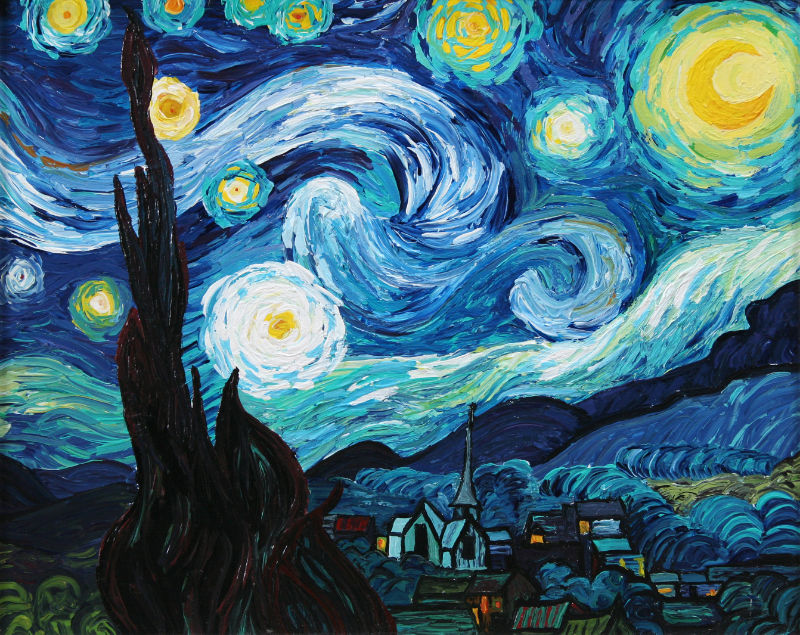
My Starry Night
1995
acrylic on panel
18 x 22 inches
First, there was the Van Gogh counterfeit that I made when I was 14 years old. His distinct brushstrokes seem to have stuck in my mind and in my hand...
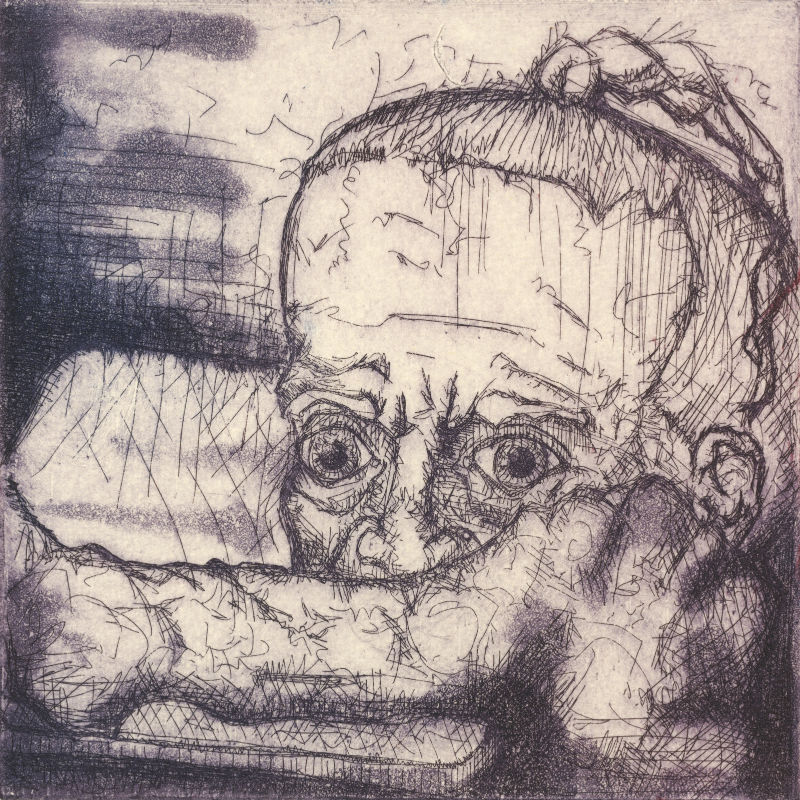
Charlotte
1998
intaglio print on paper
5 x 6 inches
...and that was only reinforced by the intaglio printmaking classes I took a year later—and then subsequently re-took a number of times in order to learn about this medium more fully. In intaglio printmaking, crosshatching is the main way of creating a tonal area.
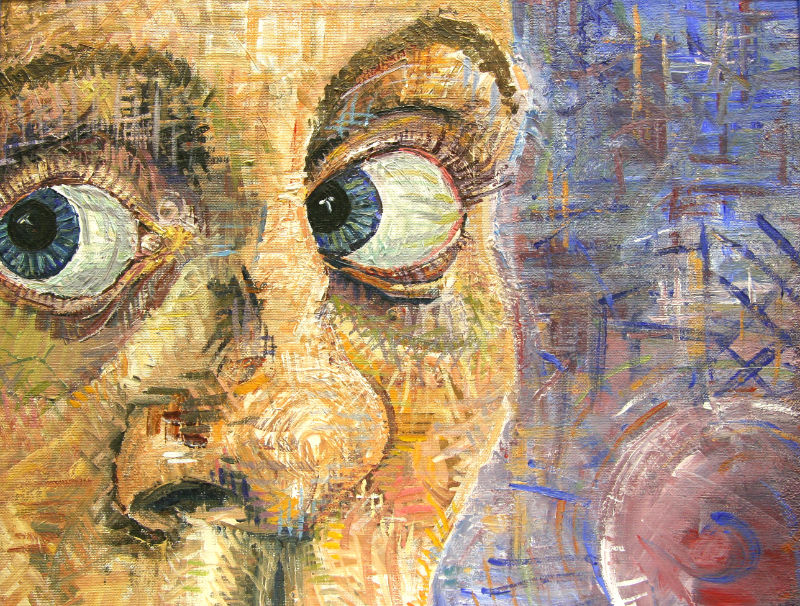
Self-portrait
1997
acrylic on canvas board
14 x 18 inches
So when I took a painting class as a 16 year old, everything was coming out as distinct brushstrokes and crosshatching.
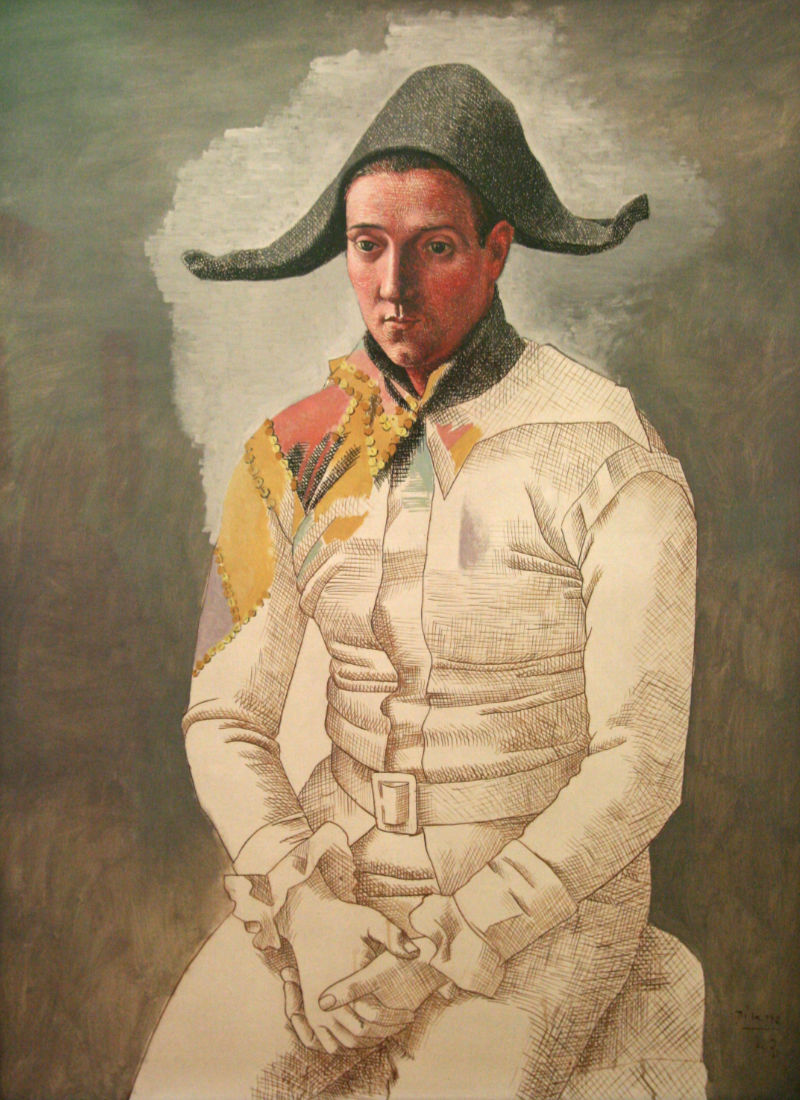
A year or so later, I ran into this guy in Paris.
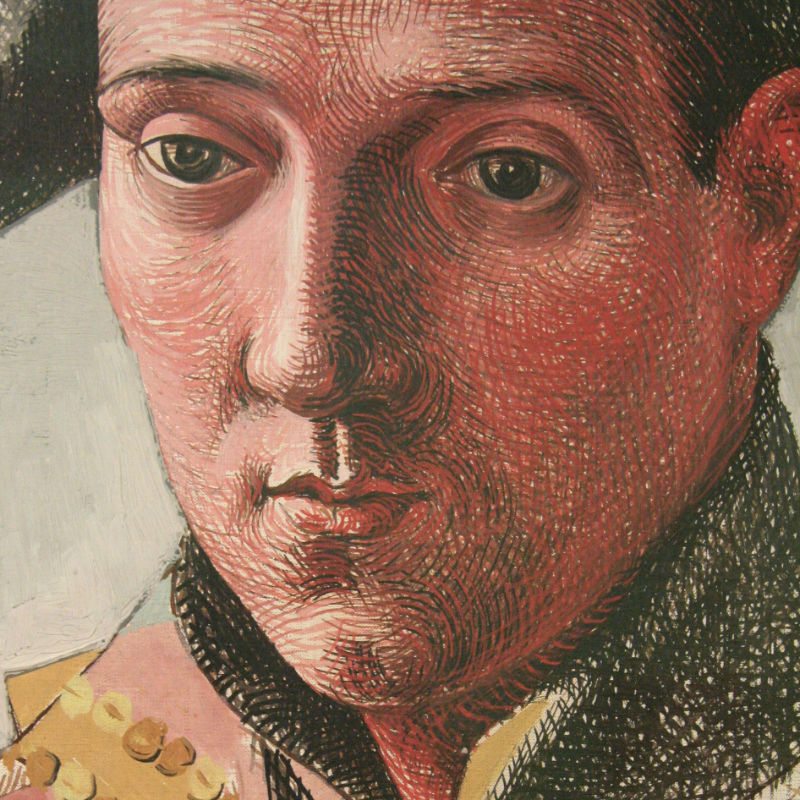
I was floored to find that my printmaking-to-painting translation was something that had been seen before. I think this was my first real encounter with the difficult question of originality. It’s the first one I remember anyway.
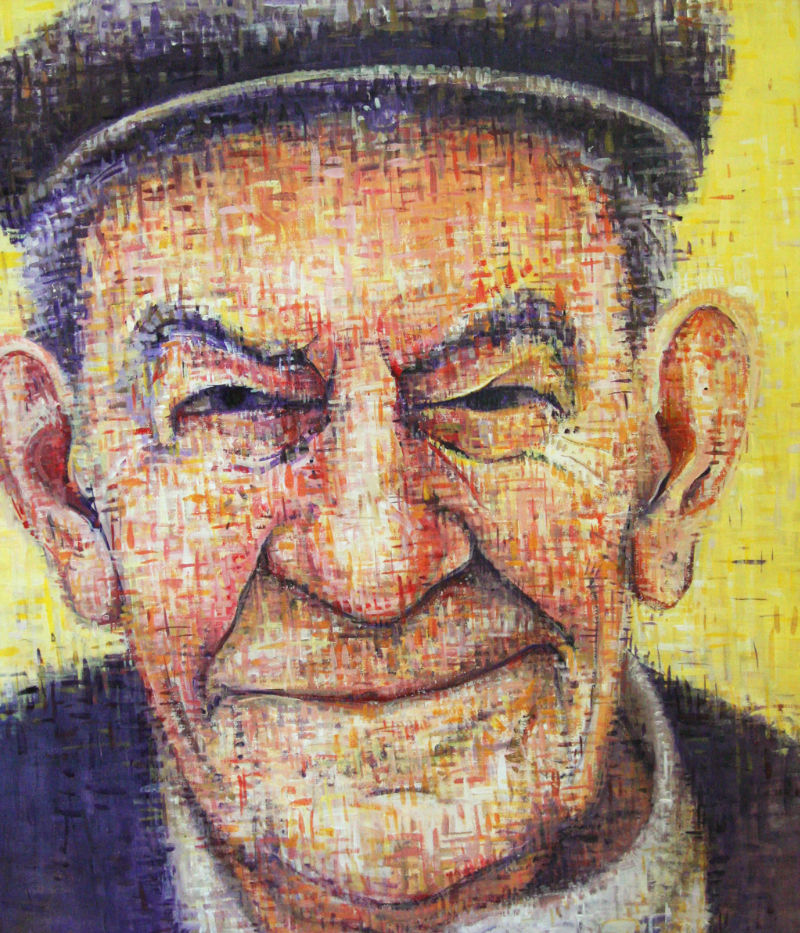
Papy
2001
acrylic on linen
33 x 28 inches
I continued with my distinct brushstrokes and crosshatching throughout my university years. I wasn’t interested in copying engraving exactly like Picasso did in his Arlequin, but I was still very rigid in my mark-making. I remember wanting to keep all my brushstrokes either horizontal or vertical.
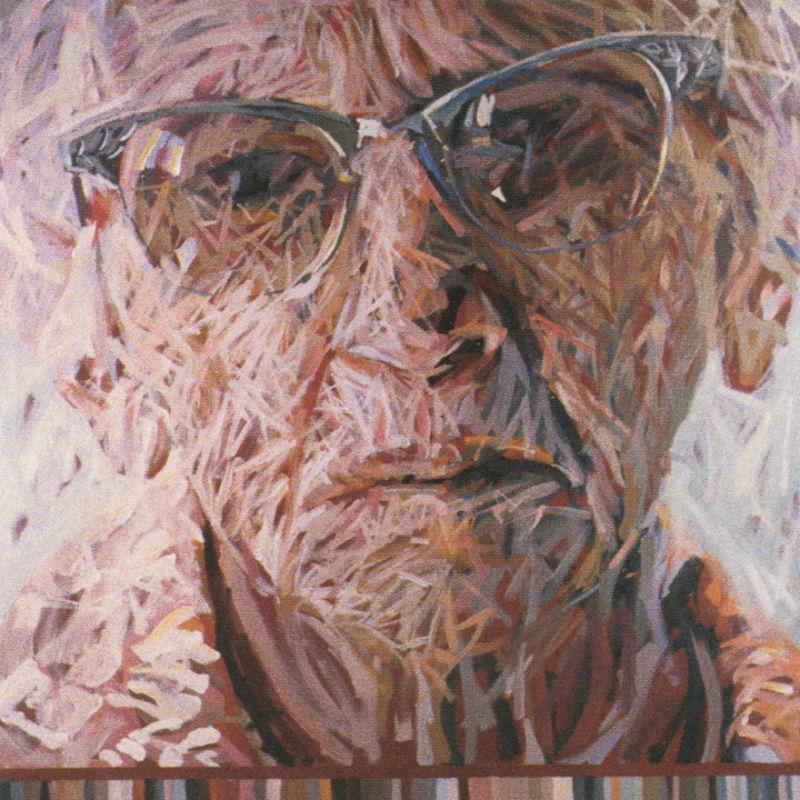
Then, while still in school, I came across Arnold Mesches’ work and fell head-over-heels in love. He showed me how much more crosshatching could accomplish, if only I would loosen up a bit.
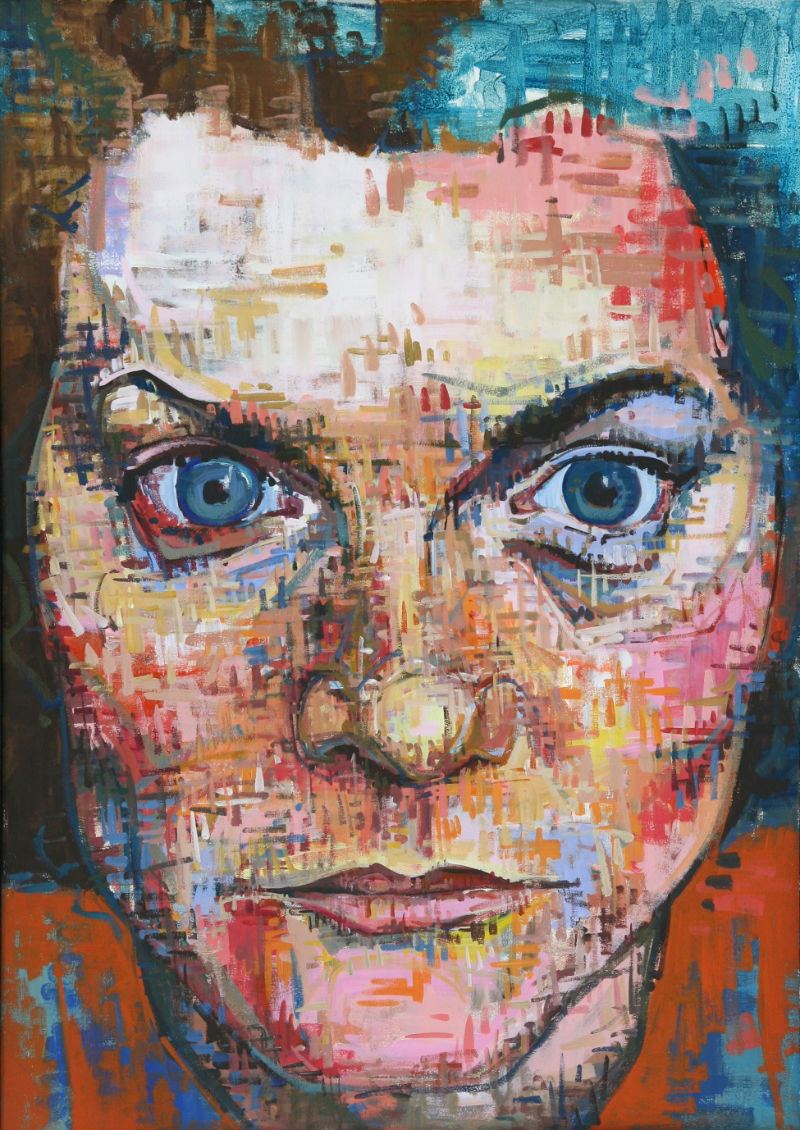
Andrea Wallace
2003
acrylic on canvas
48 x 34 inches
So I loosened up a bit! This piece was for my thesis project in 2003.
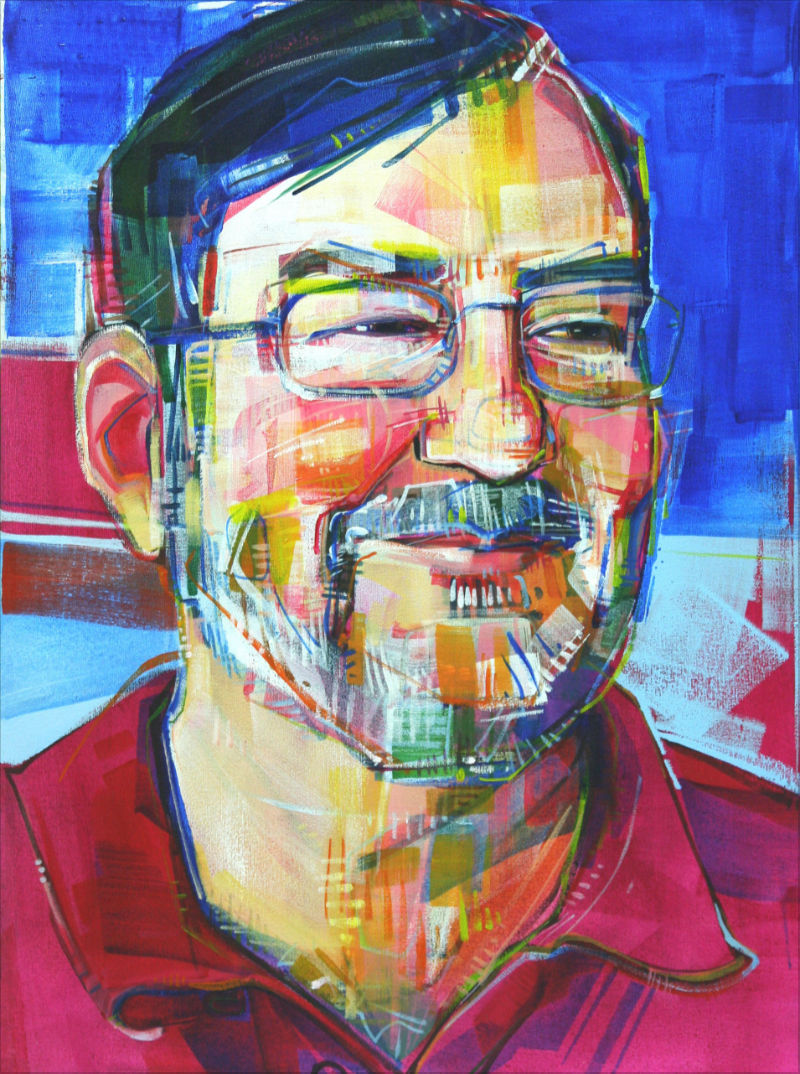
Andy Bryant (The Exception)
2006
acrylic on canvas
24 x 18 inches
Over the years, as I settled into a rhythm as a professional artist, I acquired different kinds of brushes.
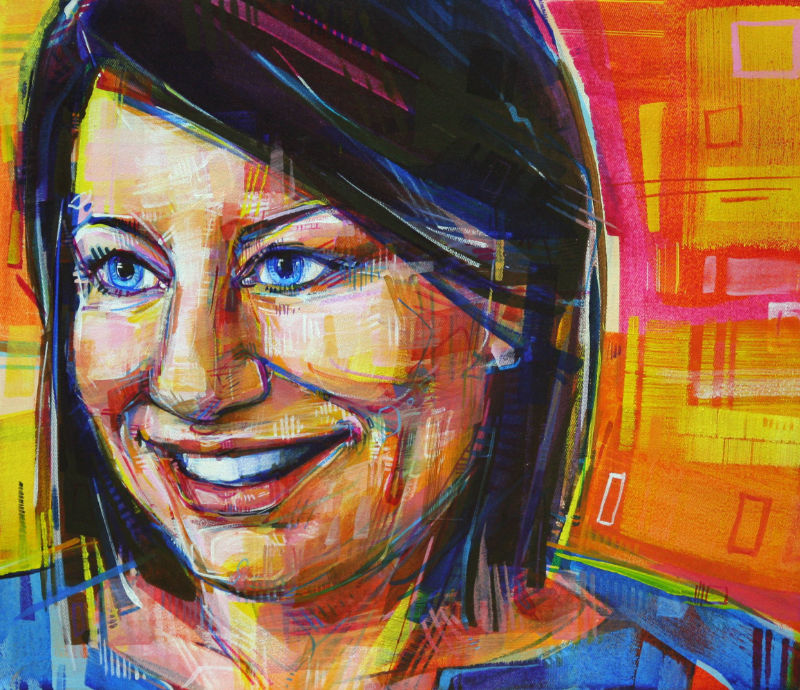
Beth (She Loves Hula Hoops)
2007
acrylic on twill
14 x 16 inches
The wider ones changed the look of my crosshatching, introducing blocky shapes into my paintings.
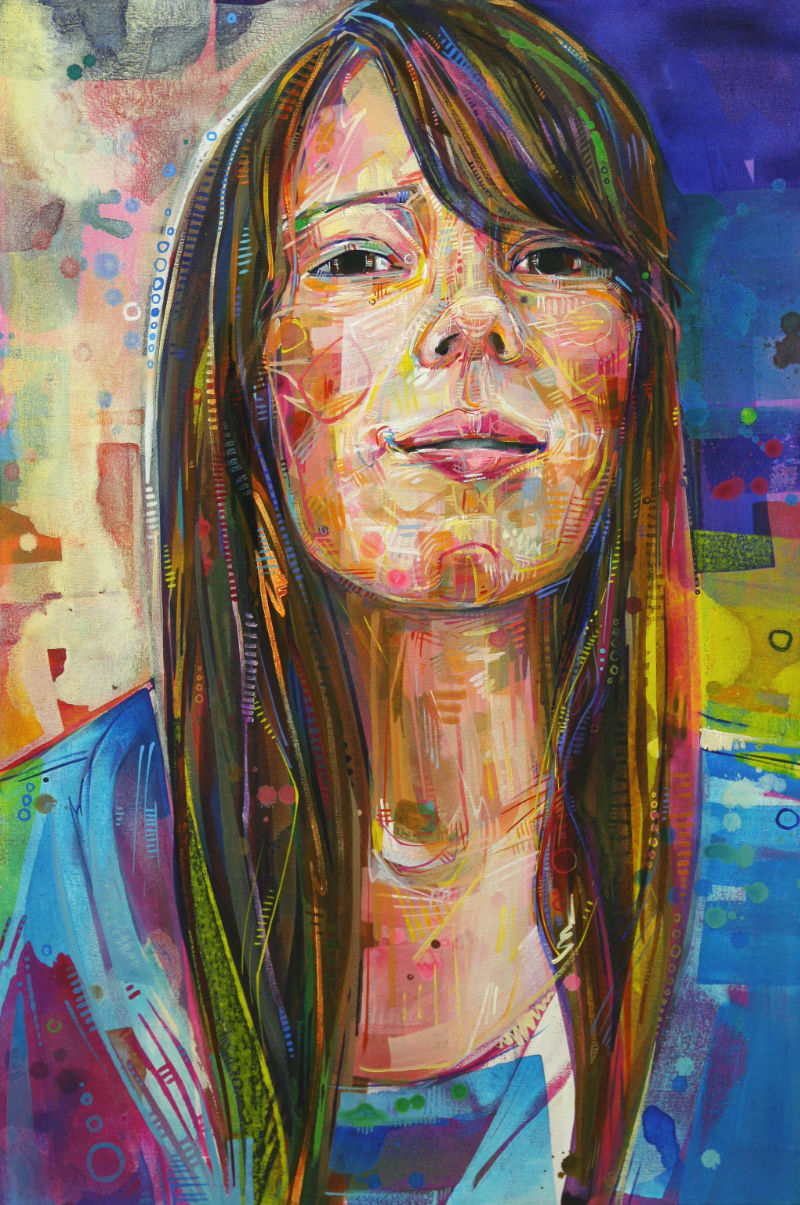
Siobhan
2010
acrylic on canvas
36 x 24 inches
The next change came after I cut my right thumb open in the spring of 2008 just as I was getting Apple Pie together. To compensate for the injury, I ended up watering down paint and pushing it around the canvas, something that I’ve continued to do even though my thumb has long since healed. In this 2010 painting, the wateriness is especially obvious in the soft background shapes.
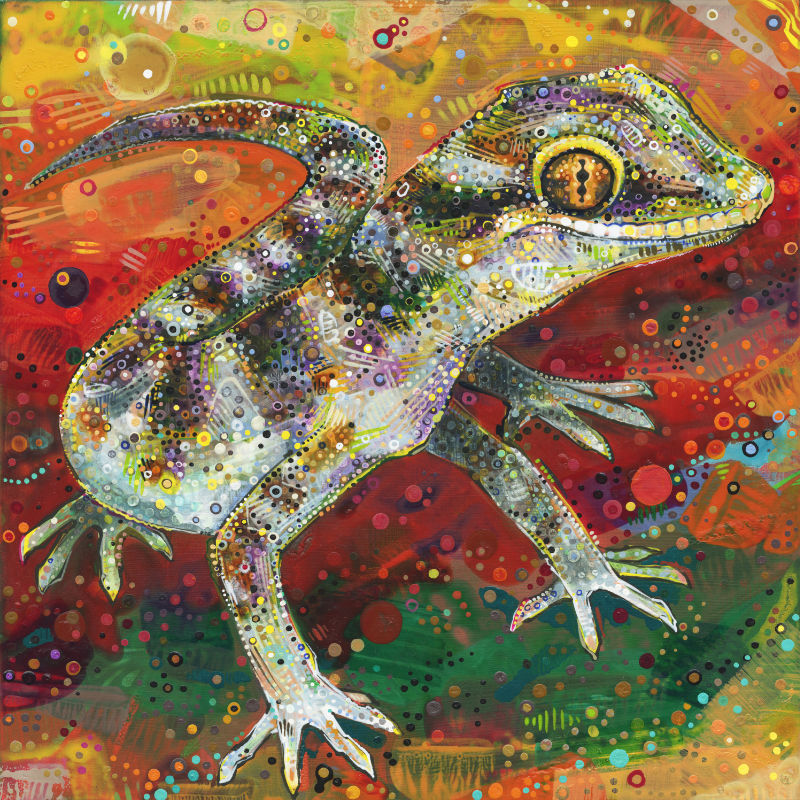
Self-replicating (Bynoe’s Gecko)
2012
acrylic on panel
10 x 10 inches
By 2011, I had made a few paintings on wood, but I was still a bit intimidated by the rigid support, so I was mostly painting on canvas or on other stretched materials. That said, I was getting tired of letting panel push me around, so I decided to paint all of Crime Against Nature on board. After making 56 paintings on wood, not only was I completely over my discomfort, but I’d learned a thing or two from this support.
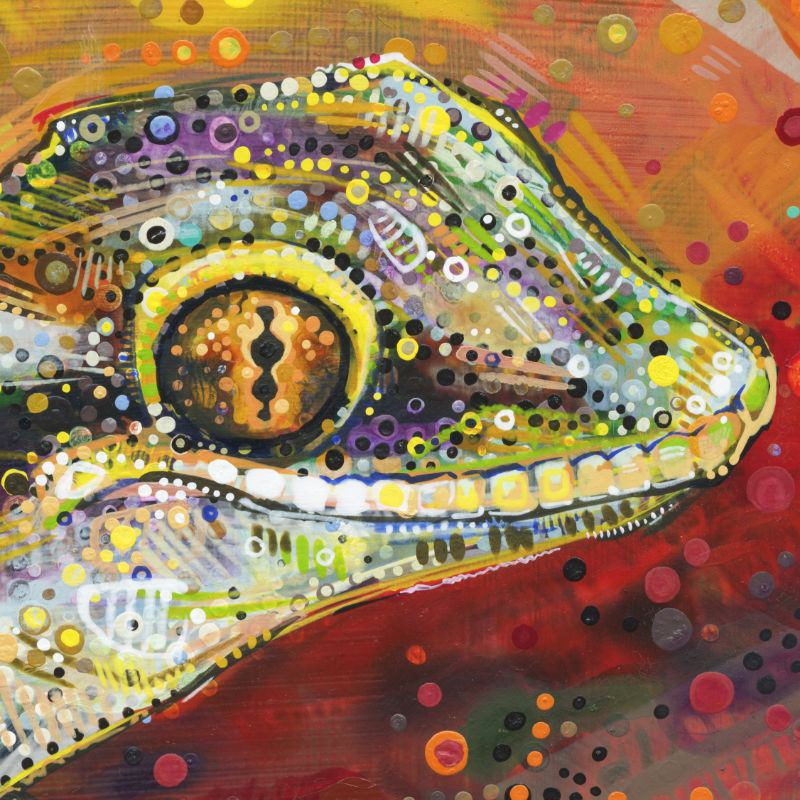
I came to really relish all my little marks and flourishes, because panel showed them off so much more crisply than canvas. I’m fairly certain that wood made me more of a doodler than I already was.
I feel like there are plenty more twists and turns in store for me and for my style, but this is a start and one that I’m proud of. Sometimes finding your way as an artist is a question of looking around at what others are doing and sometimes it’s a matter of being open to whatever life throws at you, but, mostly, the way to evolve is just to keep at it.
Maybe this post made you think of something you want to share with me? Or perhaps you have a question about my art? I’d love to hear from you!
To receive an email every time I publish a new article or video, sign up for my special mailing list.
If you enjoyed this post, Ko-fi allows you to donate. Every dollar you give is worth a bajillion to me!



